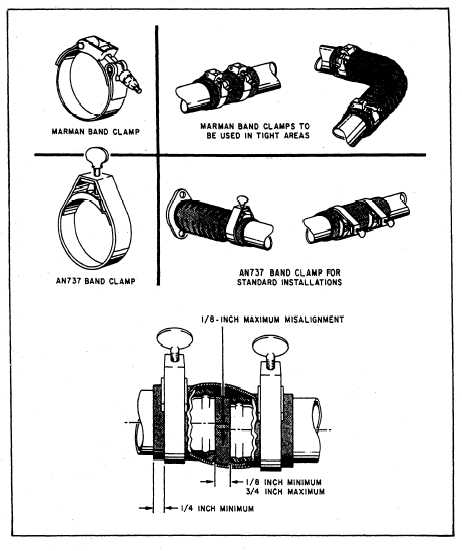A variety of clamping devices are used
in connecting aircraft environmental control
system ducting sections to each other or
to various components. Whenever lines, com-
ponents, or ducting are disconnected or re-
moved for any reason, install plugs, caps,
or coverings on the openings to prevent
the entry of foreign materials. Tag the various
parts to ensure correct reinstallation. Care
should be exercised during handling and installa-
tion to ensure that flanges are not scratched,
distorted, or deformed. Flange surfaces should
be free of dirt, grease, and corrosion. The
protective flange caps should be left on the
ducting until the installation progresses to the
point where removal is necessary to continue with
the installation.
In most cases it is mandatory to discard and
replace seals and gaskets. Ensure that seals and
gaskets are properly seated and that mating and
alignment of flanges are fitted so that excessive
torque is not required to close the joint and
impose structural loads on the clamping device.
Adjacent support clamps and brackets should
remain loose until installation of the coupling has
been completed.
Marman type clamps commonly used in
ducting systems should be tightened to the torque
value indicated on the coupling. Tighten all
couplings in the manner and to the torque value as
specified on the clamp or in the applicable MIM.
Some of the most commonly used plain band
couplings (flexible line connectors) are illustrated
in figure 3-7. When installing a hose between two
Figure 3-7.—Flexible line connectors.
3-9

